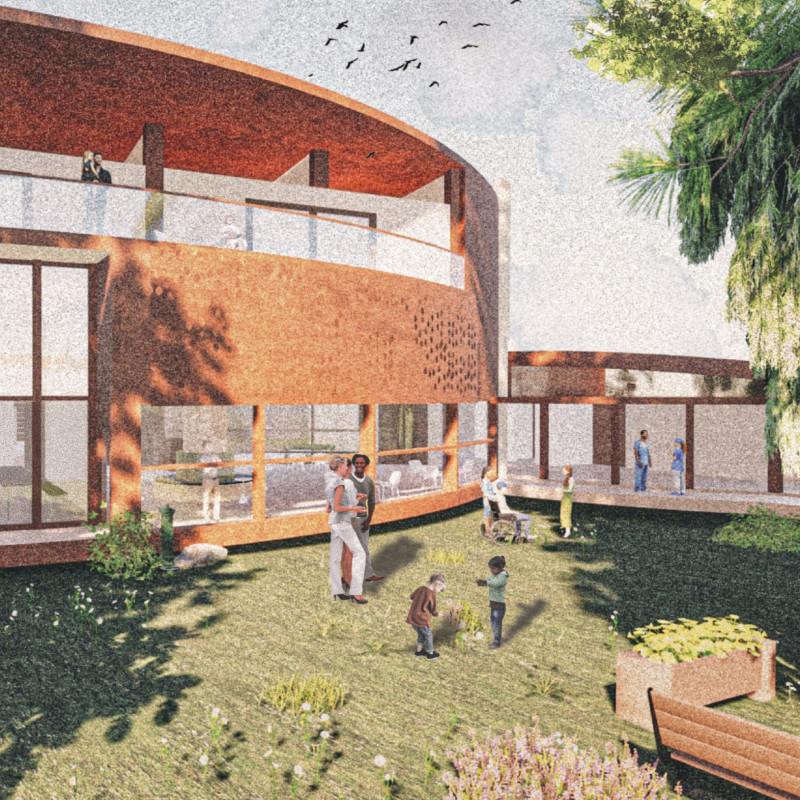5 key facts about this project
The building's function is integral to its design, serving as a mixed-use facility that combines residential and commercial spaces. This dual functionality not only increases the utility of the space but also fosters a sense of community by encouraging interaction among residents and visitors. The carefully considered layout includes strategically placed common areas, which promote socialization and collaboration among inhabitants, reinforcing the project’s role as a community hub.
One of the standout features of this architectural project is its commitment to sustainability and environmental consciousness. The design integrates various green technologies and materials, thereby reducing the overall carbon footprint. Notable materials utilized in the construction process include sustainably sourced timber, recycled steel, and low-emission glass. These materials enhance both the aesthetic quality and functional performance of the structure, promoting energy efficiency and ecological responsibility.
The architectural form embodies a modernist approach characterized by clean lines and open spaces that allow ample natural light to permeate the interior. Large windows and strategically positioned skylights create airy atmospheres while ensuring a strong connection with the exterior environment. This consideration not only enhances the visual appeal but also reinforces the building's commitment to sustainability by reducing reliance on artificial lighting.
Architectural elements such as balconies and terraces have been incorporated into the design to maximize outdoor living spaces. These features not only contribute to the visual interest of the facade but also provide residents with personal outdoor retreats, further blurring the lines between indoor and outdoor environments. The exterior treatment of the building demonstrates a careful selection of materials and finishes that reflect the surrounding landscape, creating a seamless transition between the structure and its context.
Another unique aspect of the design is its attention to accessibility. Thoughtfully designed pathways and ramps ensure that all areas of the building are navigable for individuals with varying mobility needs. This emphasis on inclusivity aligns with contemporary architectural trends that prioritize universal design principles, further enhancing the project’s appeal and functionality.
The integration of smart technology within the building is a notable aspect of its design strategy. From energy-efficient HVAC systems to automated lighting controls, these technological advancements serve to enhance the quality of life for residents while allowing for efficient management of resources. This forward-thinking approach positions the project at the forefront of modern architecture, where convenience and sustainability are paramount.
As viewers explore the intricate details of the project through its architectural plans, sections, and designs, they will gain a deeper understanding of the comprehensive thought process behind its realization. Each element has been meticulously curated to serve multiple purposes, contributing to the overall success of the architectural vision. Ultimately, the project encapsulates a rich tapestry of modern architectural ideas that emphasize community, sustainability, and functionality.
For those interested in diving deeper into this architectural endeavor, reviewing the architectural plans and sections will provide valuable insights into the design's complexities and innovative approaches. Explore the nuanced interplay of spaces and materials that defines this remarkable project, and appreciate the architectural choices that make it a standout example of contemporary design.























